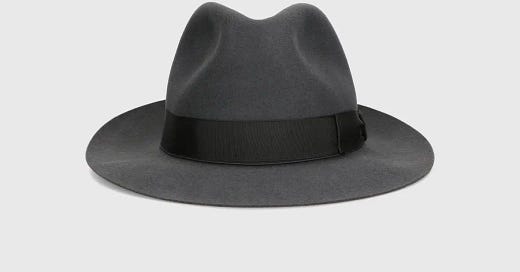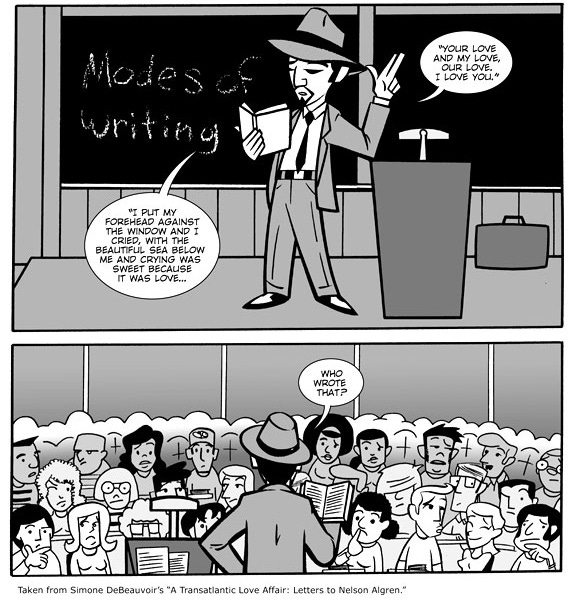CHAPTER THREE
Northmont University. Day two. June, 1984.
Not the first time I woke up in a car. But it is the first time I ever set an alarm so I could wake at a specific time, in a car.
Today I have a purpose.
John Gardener, esteemed scholar and author of my favorite writing manual The Art of Fiction, used to teach at Binghamton University. I’d be there if he hadn’t died. Dr. Bill Whitman, author of my second favorite writing manual, teaches at Northmont. I’ll be able to confirm that he’s alive in a matter of minutes.
I went through a lot of trouble to get a seat in Whitman’s Modes of Writing class. Being a freshman didn’t help. And there was a long waiting list. My essay was pretty good, but it was Uncle Glen who pulled the right strings. He’s not just an alumnus; the Assistant Director at the Center for the Writing Arts was his college roommate. Thanks again, Uncle Glen.
For me, this is life changing. It’s like hanging backstage with one of my favorite bands, getting the Nobel Peace Prize and watching Phoebe Cates in a red bikini slo-mo rise from a swimming pool all at the same time. Though I'm not exactly showing this occasion the proper respect. My pits are a little ripe. Shoulda used the dorm shower. Shaved. Or at least taken time for a sink bath. Maybe splashed myself with cologne or disinfectant. Yeah, I shoulda, but I wanted to arrive early enough to get a choice seat in the lecture hall.
The room fills quickly.
A cute girl in cheeky Daisy Dukes decides not to take the seat next to me. I’m pretty sure she got a nostril full of my primitive manliness.
As she turns up her nose I tell myself I’m here for an education, not to meet girls. Though next time, in deference to Whitman and for the benefit of my social life, I need to consider hygiene a priority.
With no greeting or introduction, Dr. Bill Whitman quietly enters the cavernous lecture hall. The kitschy promo photo on the book jacket for Morality and Fiction has come alive. All this time I thought his 50’s cocktail retro look was meant to be ironic.
Reaching the podium, Whitman gazes out at the class. “Is love life?” He sighs. “That was rhetorical, don’t bother answering.”
He’s actually wearing the fedora, in class.
“I’m thinking of a famous female writer, an intellectual who believed life had no meaning.” Whitman fiddles with his goatee. “Can you name her?” He slowly swats the air. “Feel free to answer this time.”
Everyone in the room seems as clueless as me. I try to remember the names of a few suicidal female authors, but I can’t get past the one who stuck her head in an oven–Sylvia something. Plath?
“What if I was to say that she was a highly regarded exponent of existential philosophy?” Whitman appears irritated, but he’s smiling. “What if I told you she was Jean-Paul Sartre’s main squeeze?”
Plath is out. So am I.
"Simone de Beauvoir,” Whitman says. “She devoted her life to Sartre. But she was a naughty girl with a roving eye. She gave her heart … to Nelson Algren.”
Never heard of him. Much less the lover he shared with Sartre. I barely know who Sartre is. I know he wrote Being and Nothingness. Guess I’ll have to read it now.
“Simone de Beauvior and Nelson Algren were an ocean apart, but she couldn’t stop thinking about him. So they stayed connected through steamy, long distance love letters.” Whitman leans against the podium. “Any of you ever written a love letter? Show of hands.”
A few hands are raised. One girl is eager to please. Many of those willing to participate sport a rosier complexion. I salute them. It takes guts to admit you once suffered from lovesickness.
Whitman leafs through a binder. “Jack Zawinul?”
I half-heartedly raise my hand.
Whitman nods. “If I were to go by this young man’s t-shirt, I would say he’s not the sort to write a love letter. In fact, I might conclude that Mr. Zawinul considers love to be destructive. Am I correct, sir?”
I lower my head to view the shirt I’m wearing. Yeah, the singer in Joy Division did commit suicide. Was it due to love sickness? I have no idea.
“Have you ever been in love, Mr. Zawinul?”
“Sorta,” I say, but I don’t mean it. “Not really.” That’s not right either. “No sir.”
“No one ever broke your heart?”
I can barely squeak out a “no.”
“Love did not tear you and your lover apart, then?” Elbows leaning into the podium, Whitman claps his palms together, placing both index fingers against his lips. “Why are you in this class?”
“Well, I-I want to be a... writer.” That’s me telling the truth. And if I knew what was good for me, I would stop talking. But I add, “A good one, like you.”
I’m a natural born kiss ass. Can’t help myself.
“Hmph, I want to be a porn star.” Whitman shakes his head. “Unfortunately, I’m not equipped.”
Everyone’s laughing and my cheeks feel like they’re on fire.
Whitman glares at me as if we were the only two people in the room. “Nelson Algren,” Whitman announces. “He was a great writer – fully equipped to get the job done.”
Nelson Algren & Simone de Beauvior
A Transatlantic Love Affair: Letters to Nelson Algren
In the comic, it’s 1977, and Jack starts school in November. In the novel, it’s 1984, and he starts school in June. Also, the comics character designs and the character descriptions in the novel don’t match up. To avoid confusion, I’ll show more of Jay’s illustrations later in a separate post. Soon.
BEATITUDE © Mark Scott Ricketts
BEATITUDE Illustrations by Jay Washer
Apologies to the late Jack Kerouac for use of his “Belief and Technique for Modern Prose" tips.









I'm liking this, but it's bringing back cringe-worthy episodes from my own college days, that I'd thought I'd managed to bury decades ago. The late seventies and early eighties were a confusing time... looking forward to more!